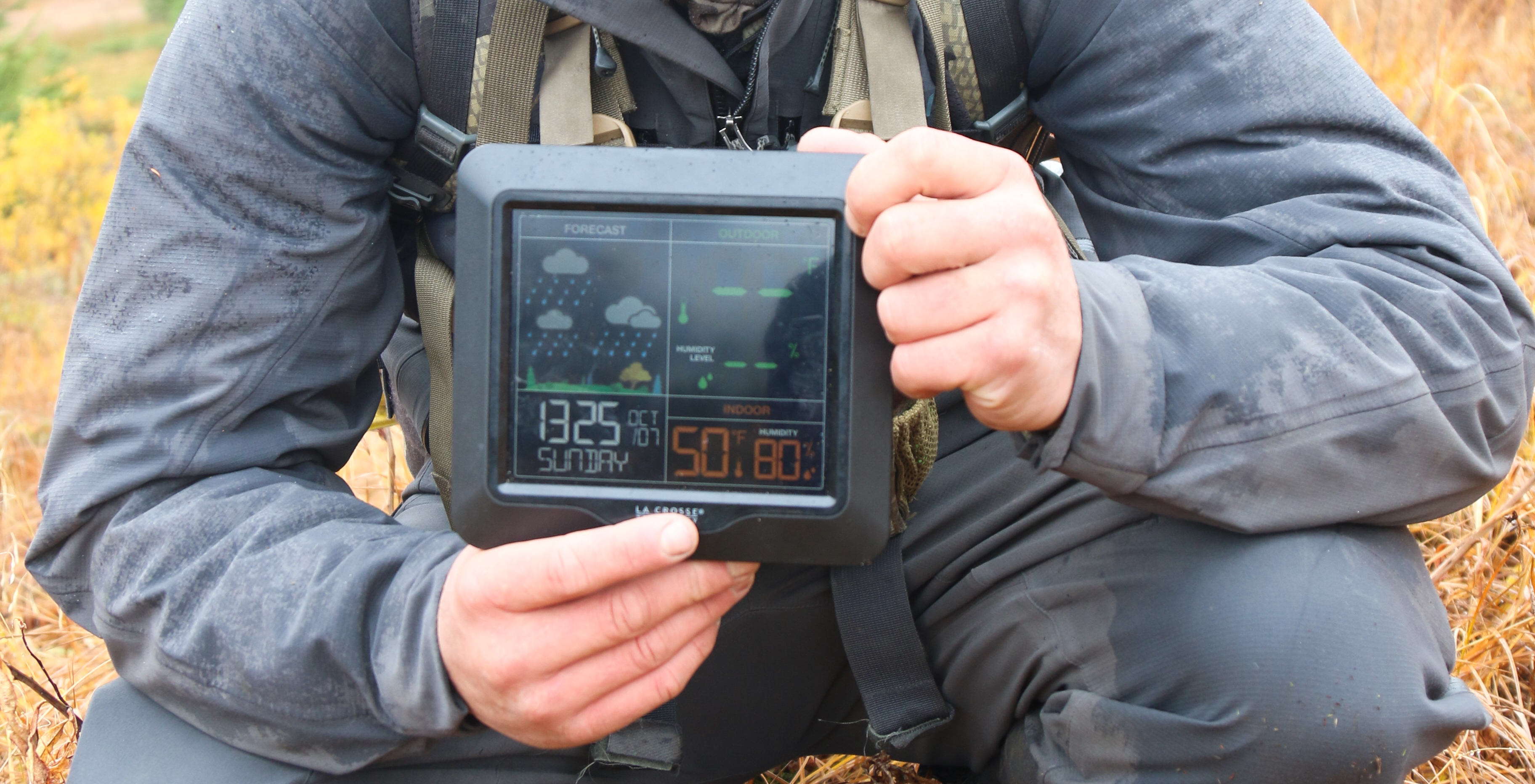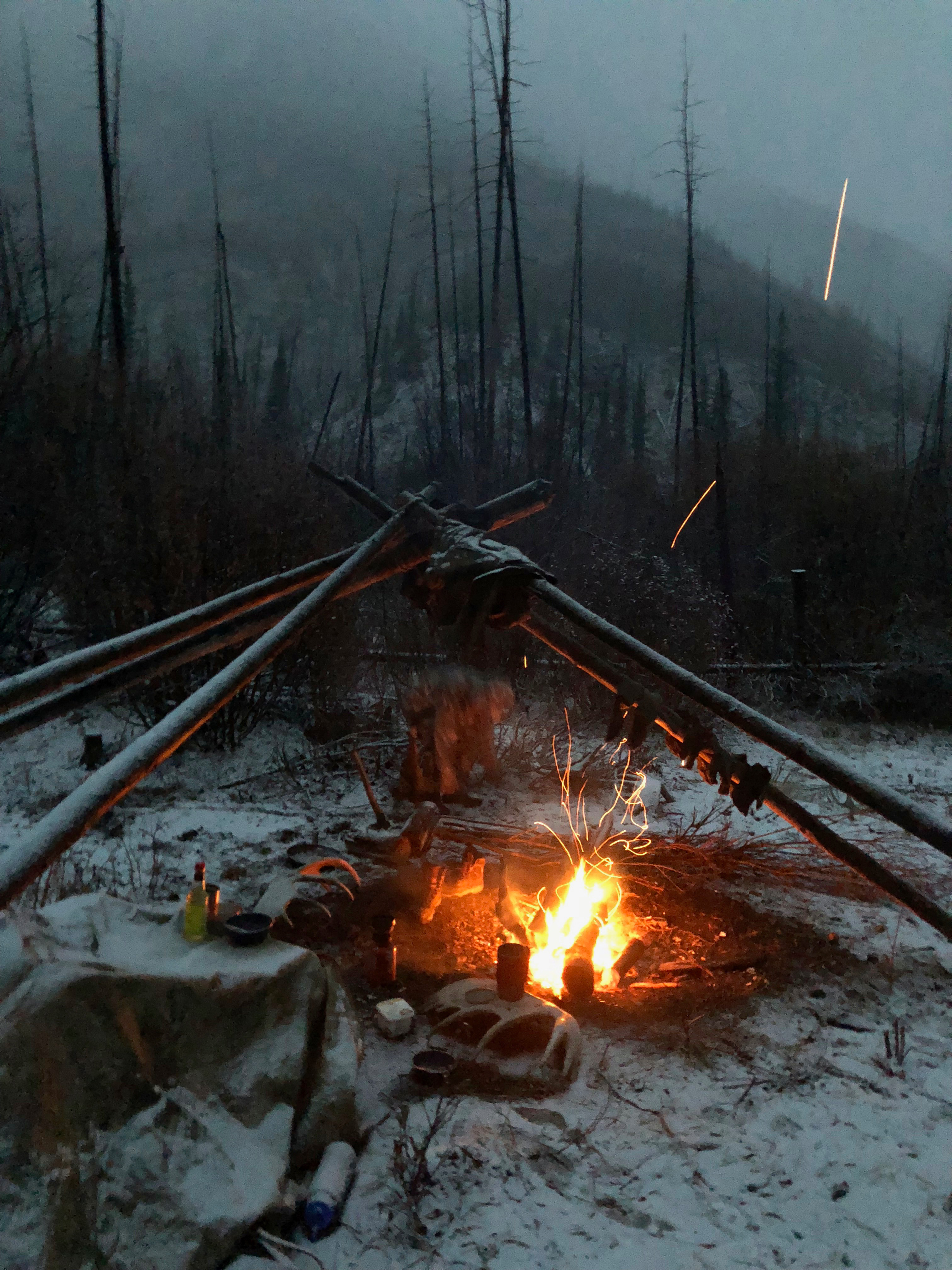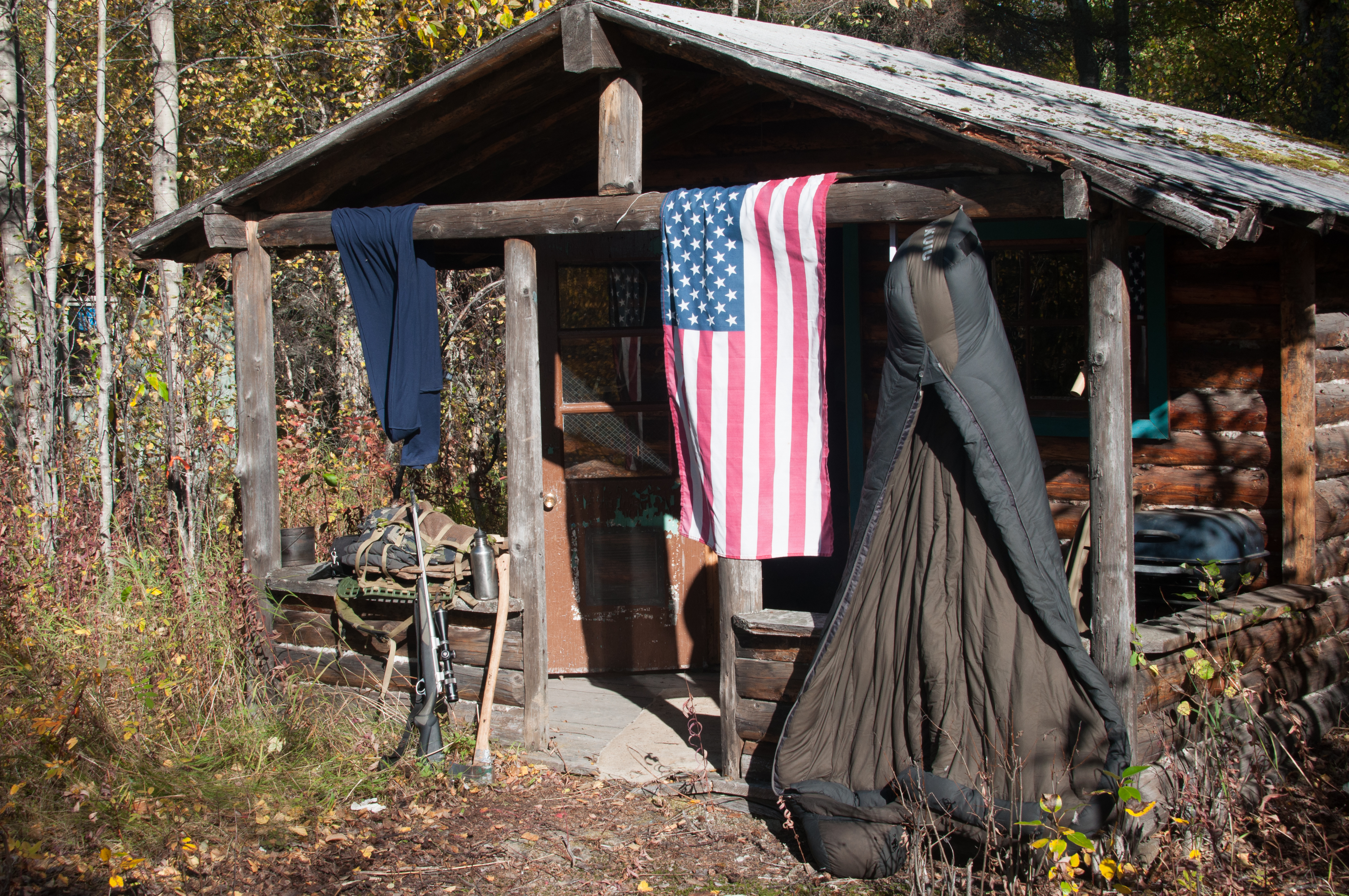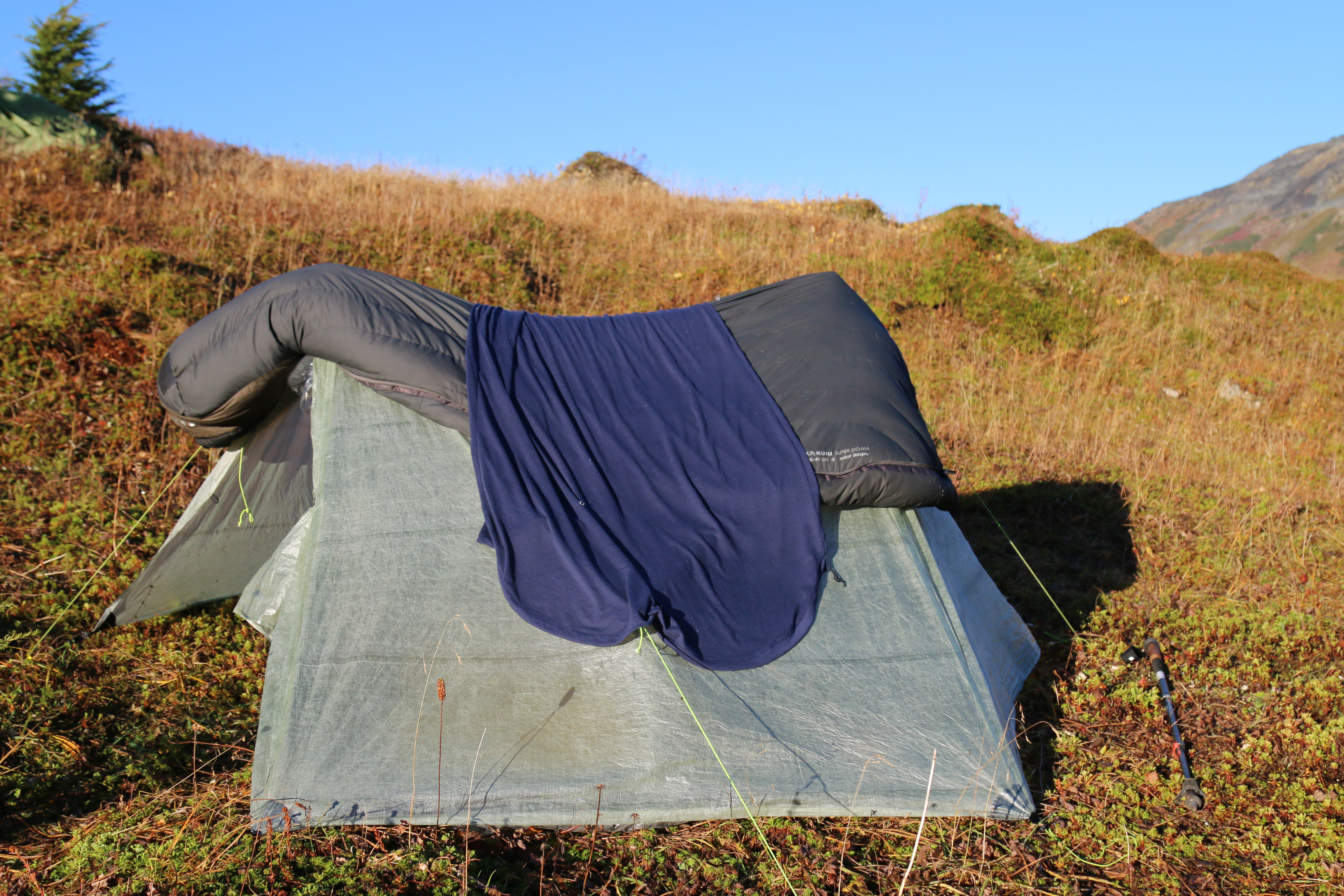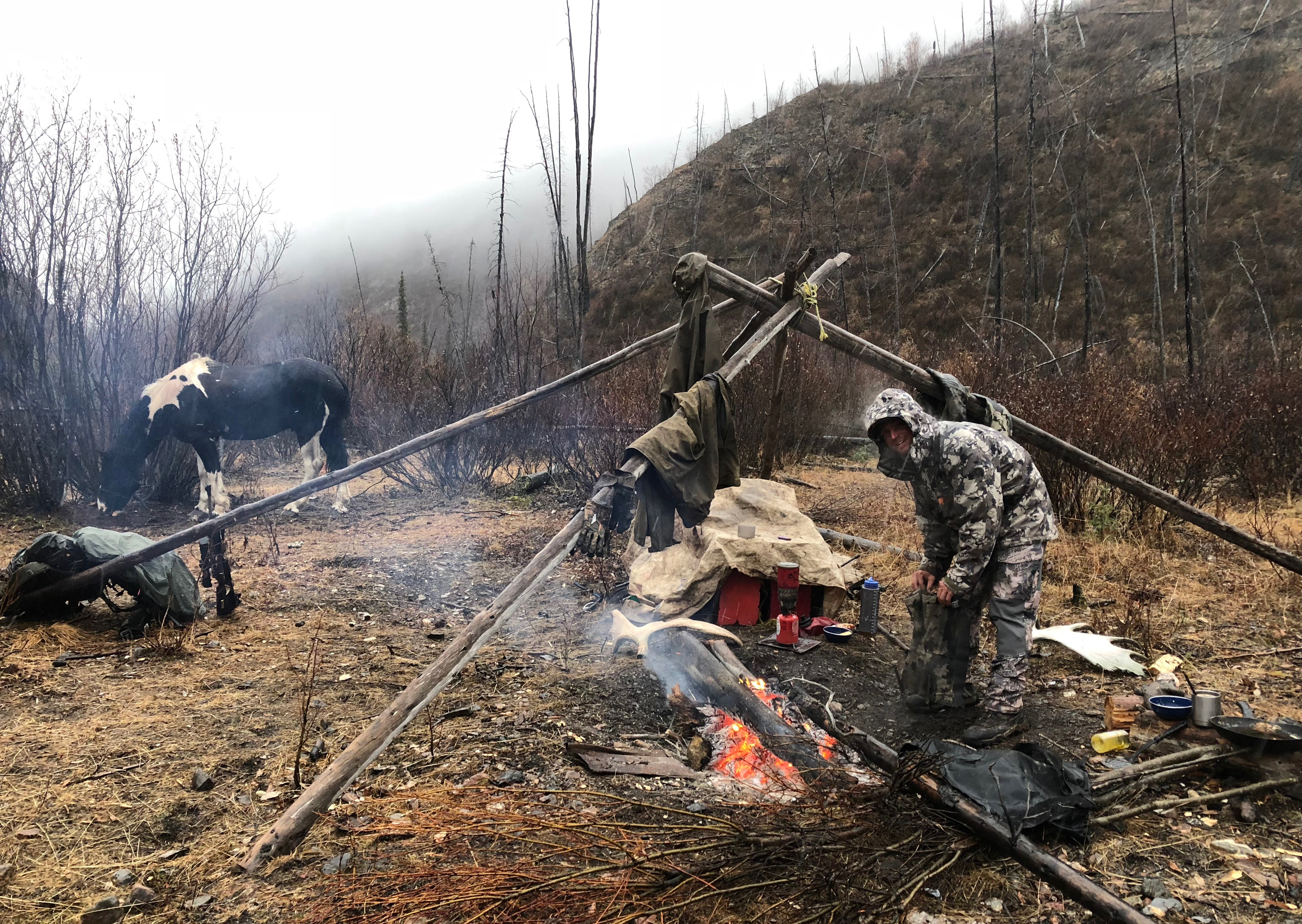It is with near certainty that your great northern adventures will introduce you to a state of being wet, cold, and miserable. As we travel down the path towards becoming savvy outdoorsmen and women, we generally progress through an evolutionary process of dealing with this state. In their infancy, people often are not experienced enough to avoid getting wet – and thus cold and miserable. As such, they embrace the torture as being part of the whole experience. On the higher end of the spectrum, there are hunters who may claim that they don’t get wet and cold anymore. Perhaps, they’ve experienced it enough that they no longer feel the urge to venture into it. Alternatively, it can be because they know how to stave off the elements and continue their quest. No matter what the case, it’s inevitable that we all end up wet, cold, and miserable.
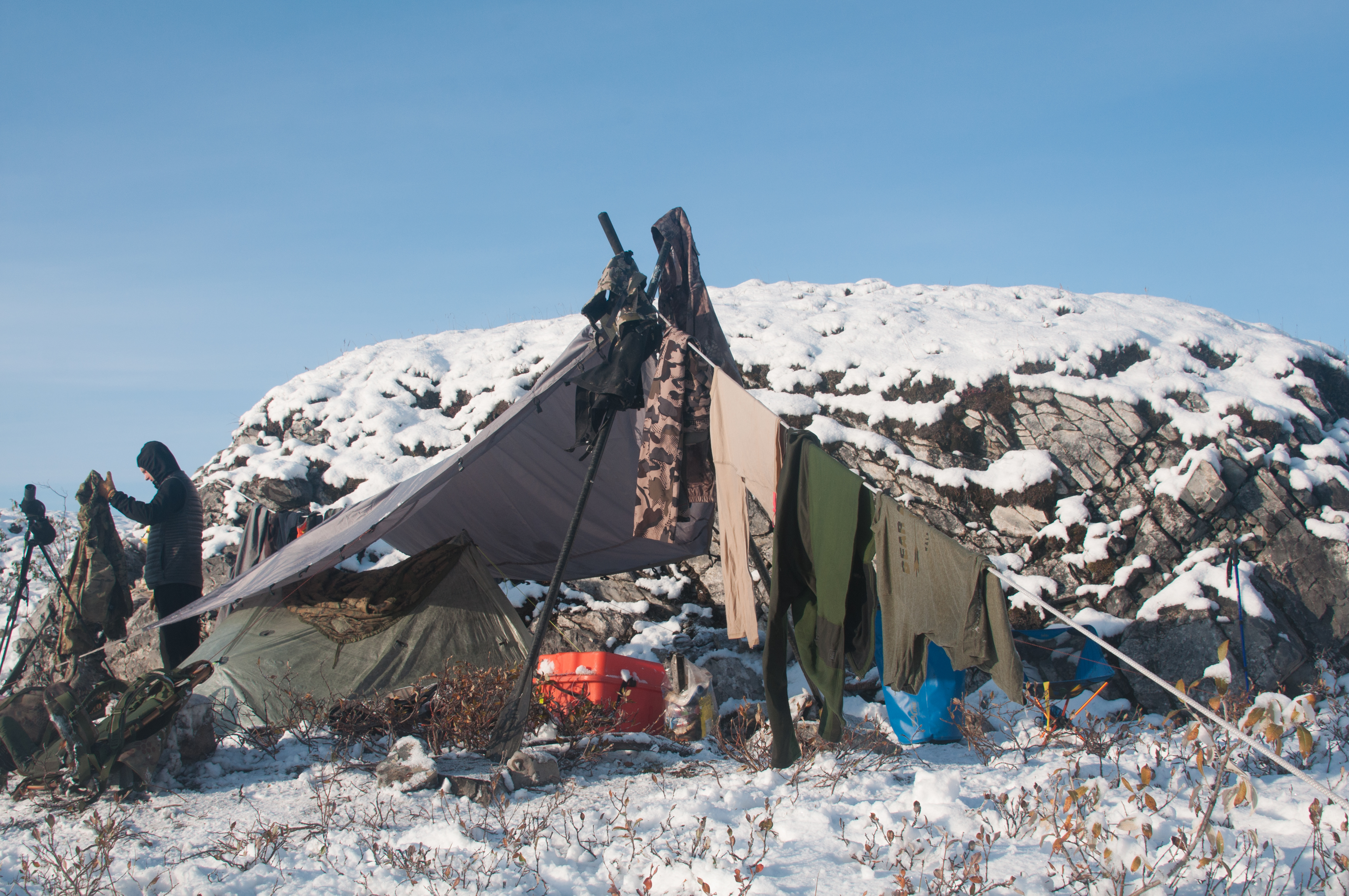
It’s imperative that you recognize the strain this will place on you, your safety, and your odds of success and that you promptly take action to improve your situation. The vast majority of hunters can only tolerate 48 hours of being wet and cold before they’ll quit hunting; Two miserable nights are all the common man will tolerate before their brain can’t focus on higher level tasks. The cold and exhaustion cause the lower levels of the brain to take over and to concentrate on securing its basic needs. It will tell you, “we are not prepared for this. Let’s GTFOOH” and steer you towards the warmth and security of home. It routinely plays out as follows…
You’ll sleep comfortably in a dry sleeping bag until the morning that the conditions change and it becomes wet outside. In your rested state, your ambition to hunt will take you out in the sogginess and make you a little careless with your moisture discipline. That night you go to sleep damp but you try to wear your wet items inside your sleeping bag to dry them out because you’ve heard tales that this can be done. It sucks and you sleep poorly. You awake in the morning poorly rested and still a little damp. Through the day, you grow increasingly frustrated as the conditions remain soggy and you accumulate more moisture. You’re now (some degree of) wet through your insulating and base layers. Without dedicated effort, you’ll go to bed in a terrible mood and crawl into that damp sleeping bag. It progresses from damp to wet as you add more moisture to it. You’ll toss, turn and perhaps shiver all night and you’ll say, “if the weather isn’t clear tomorrow, we’re out of here. I can’t take any more of this shit!”
*Author’s Note: There are many tales of people who crawl into their synthetic sleeping bag when they are wet and they wake up dry. Also, of people who claim they can throw their socks into the bottom of their bag and they are dry in the morning. I’ve failed this attempt too many times to consider recommending it. I’ve only succeeded in making my sleeping bag smell like a wet moldy foot.
Without intending to, I immersed myself in the subject of moisture management and challenged the common knowledge this hunting season. As the year progressed, I honed my game for getting and staying dry and organized some pearls of wisdom. I began by focusing on tricks to avoid getting wet in the first place. These were covered in part one of this series – an article we entitled, “Give Your Rain Gear a Fighting Chance.” Over the course of this study, I discovered how my mental engagement in the hunt waxed and waned depending on how warm and dry I was.
The ensuing wisdom is that we are most successful when our minds are able to engage in higher-level thinking and that this ability fades fast when our core temperature drops. Thus, I now preach that hunters routinely evaluate the things that are inhibiting their success and “ STOP STOP STOP and improve your situation.” I’ve also come to believe that mental focus is the reason why guided hunters are so much more successful than DIYers. Simply stated, guided hunters have a team of people working for them to keep them in the game- to keep them dry, warm, fed, and motivated.
For the DIY hunter, preparing to stay in the game for the full planned length of a backcountry hunt necessitates total preparation before embarking on it – more than just researching high tech gear and studying aerial photos. Prepare for the worst weather elements that may be thrown at you by evaluating the four sources of heat available to you – Fire, Stove, Sun, and Body heat. These will help you get dry, stay dry, and stay in the game. It’s difficult to determine ahead of time just how much of these can be counted upon, but these tips will give you some ideas on how to harness their power.
Fire:
The optimal way to dry your clothes is to wear them and stand next to the fire. Of course, this doesn’t matter if you cannot start a fire. Before you head north, you owe it to yourself and to prehistoric man to hone your fire craft skills. With some foresight, you can get a fire going anywhere there is wood and dramatically improve your situation. There’s no excuse for an inability to start a fire. I’ve heard too many people tell sob stories about their inadvertent swims and soggy bottom blues from wilderness debacles. Fire would have saved their day had they not been so ignoramus.
While on the trail, keep a keen eye out for suitable firewood. This is especially true in the barren tundra regions. When you see a good chunk of wood, cache it on a rocky or elevated place so it won’t soak up ground moisture. Ideally, it will also be protected from rain and be exposed to the drying sun and breeze. Evergreens can be a one-stop-shop for beating the rain — providing suitable shelter and ample kindling. When you’ve protected yourself from the wet elements, get that fire ripping. The cheapest, lightest, and most efficient fire starters are cotton balls smeared with petroleum jelly. If those fail, build the fire over the top of your stove and cook it until the stove heat drives out the moisture and ignites your kindling.
When drying items that you are not wearing, holding them in your hands over the heat is safest for them. If you set them down, the wisest distance to place them near the fire is the same distance from the edge as the height of the flames — If the flames are two-feet high, you should set your boots two feet away from them. It will dry slower than you prefer but will return a dry usable item in the end. If you’ve ever watched something be dried by a fire before, you’ve seen something melted and rendered useless. Slow is smooth. Smooth is fast.
Stove:
I now recommend that hunters carry way more stove fuel than they ever plan to use, especially when a fire may not always be an option. It’s too cheap to ration. In many instances, running a stove under a shelter is the only way that you’ll be able to keep you and your gear warm enough to drive out the moisture. Also, your wet, cold, miserable spirits will completely crumble the moment you can no longer brew coffee or make hot chow. I acknowledge that running a stove inside a tent is ill-advised but, with some common sense and boy scout ingenuity, I trust that you can devise a safe system.
Even if you are on a fly-in with weight restrictions, you can find savvy ways to sneak in extra cans of fuel. Make it happen. If you are a weight-disciplined gear-nut who’s backpacking in, consider culling these added ounces from somewhere else or just carrying the extra weight until you can cache it.
The Sun:
Never ignore the great gift of the sun’s rays. They provide an effortless means to improve your situation. Use the sun whenever you see it, especially in the north country. If the sun shows itself as you’re packing around wet items, STOP STOP STOP and take advantage of its radiant warmth. Being dry when you go to bed at night is more important than getting where you’re going with nothing but wet crap.
Body Heat:
When the temps are in the 40’s and the humidity is 100%, nothing dries just by hanging it up. Without the previously discussed heat sources, it’s up to you to create the heat needed to get the job done. Tap into the exorbitant amount of fuel in your body. It’s packed around your organs, spread beneath your skin and piled high right above your belt. All this fat can be deployed to keep you warm but, like the stove and the fire, you have to ignite and feed it. You need to motivate yourself to get moving and create body heat.
Keep yourself motivated by keeping your brain engaged. Challenge your brain to improve your situation. Begin the game by contriving a better shelter from the elements. Maybe that just entails finding a pocket of evergreens to tuck under but it could involve rigging up a sexy tarp-shelter. Either way, it’s healthy for the brain to problem solve and it’s good for the body to both move around and have a place to evade the elements.
Next, find ways to turn the things you carry into useful tools. A camera tripod makes a good drying rack. Canteen filled with hot water make great boot dryers, as do small stones heated in the fire. Socks can be dried by layering them between your thighs and your base layers. Etc. Getting dry will become a fun game. And once you are really engaged in the challenge, things will start clicking and you’ll start thinking unconventionally. In one extremely cold soggy stretch in the Brooks Range, I completely re-arranged the order of my layers. I put my rain gear over the top of my dry base layers and then put my wet insulation layers over the top of my rain gear. Then I made a hot cocktail and stood next to the fire all evening. It generated a heat source on both sides of my damp insulation layers while the rain gear protected my dry base layers from absorbing any new moisture. The magic in all these tricks is that they keep your mind engaged and your body moving until the rain stops and you can really turn up the heat.
Turning up the heat:
Breathable raingear, synthetic insulation, and merino wool all need a temperature gradient to pull moisture away from your core and push it into the air. You won’t generate much body heat just by moping around with a wet itchy butt. Once you are no longer worried about fighting off external moisture, find a well-worn trail, a barren ridgeline, a gravel shoreline or anywhere where there’s not wet foliage and get your motor running hot. Wear that icky wet stuff so your body can dry it. You can decrease drying time if you can also generate air currents so open up your cuffs and vent zippers during your hike.
These walkabouts can help dry your boots as well – a key to preventing the incapacitation of frozen boots in the morning. Keep them on your feet but untied and stretched open at the top. This allows more room for moisture to escape. Keep the insides warm by wearing them on your walk or by standing near the fire. Meanwhile, rotate into dry socks whenever the socks you are wearing have soaked up all the moisture they can hold. As your new socks are doing their job inside the boot, the wet ones can be drying by the fire or around your neck. Continue cycling through socks until you’ve succeeded. If it turns out that you have leaky boots, you’re screwed. It may be futile to even attempt drying them. Rotate socks frequently through the day with the on-deck pairs drying around your collar. Conditions will determine how much venturing you opt to do. Regardless, Keep one pair of socks dry and reserved for sleeping.
Ensuring comfortable sleep is the apex of wisdom. Sleep is a tool. Make certain that you maintain a sleeping bag and one layer of clothes that are dry at all times. Keep these protected in a dry-bag or stuff sack during the day so they so they are ready to serve you at night. Awaking rested will help you maintain positive attitudes, clever problem-solving skills, and a desire to stay in the game. Winning the battle over the elements may even become the more rewarding parts of your adventure – it’s ultimately what will allow you to harvest your mountain monarch.
Your brain and your body are without a doubt your most valuable assets for every facet of hunting.
Take the best care of them and you’ll keep yourself dry, warm and saturated with success.
Happy Hunting
Steve Opat


